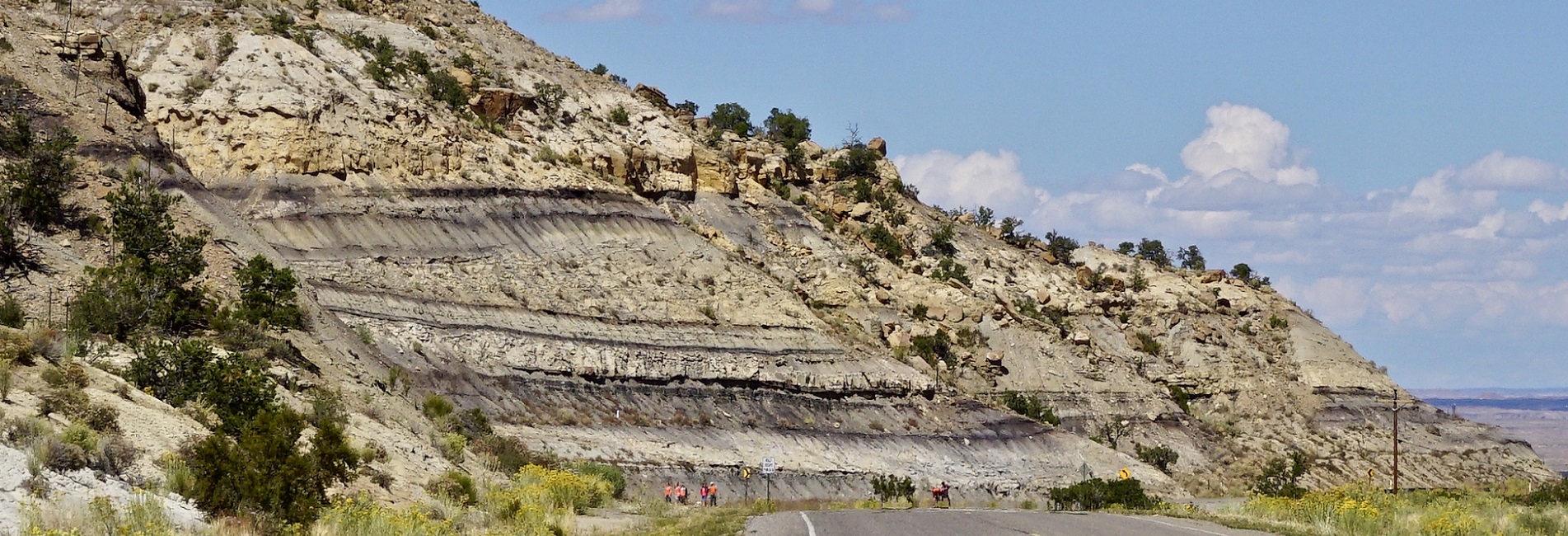Safety on Geology Field Trips
It’s lunch-time on McKittrick Trail in the Guadalupe Mountains of Texas. It’s a carbonate field trip and you and your co-worker are glad to be out of the office. You lean over to grab your water bottle but turn around when you hear the commotion behind you. Your co-worker is scratching her throat and cant breathe and everyone else is watching helplessly. Some are giving blows on her back assuming she’s choking. Luckily this one guy who is the “floor warden” at his oil company comes to the rescue – so you assume he’s trained in First Aid. But then you see him getting frustrated when he’s not getting a cell signal for some weird reason at an elevation of 5000 feet in the middle of no-where. His urban first-aid training taught him the three C’s: Check-Call-Care. He checked and saw your co-worker on the floor gasping for air, he tried to call, and now he has no clue as to how he should care. This story wont end happily because anaphylactic shock wont allow her enough time to hike the two hours down and the hour-drive to an urgent care center.
Useless for the outdoors – in-fact many of the principles taught in this course have no place in the wilderness setting
This is the end of field trips for your company, and most likely the end of leading field trips for your instructor. You all received the liability waiver that you never read but still signed. No one really talked about it afterwards so now your co-worker’s family gets to sue this training company leading the field trip for negligence (and for good reason).
This story may seem dramatic. You’ve probably been on several field trips and nothing bad ever happened. But the question is, when things do go wrong, who is responsible?
No longer ignorant or blissful – consider this an “awareness” level course
We started leading field trips in 2012. In the beginning, I made sure my crew was all first aid trained. If you rolled your ankle and couldn’t hike out we could call for an ambulance. In theory, this was great because we had three different cell services which meant one of us would still get reception. All was good until we realized that everyone and their mom led the same Book Cliffs field trip and to get competitive we needed to find areas off the beaten path. This meant areas away from cell service with longer hikes. “Check, call, care” would no longer work and so we all got certified in Wilderness First Aid. This actually made things worse when we realized that even with a satellite phone handy the backcountry presented a whole new set of challenges that we just weren’t prepared for. Clients could require immediate medical attention that meant that if the hike was going to take more than an hour one-way + driving distance from the trailhead to the nearest hospital, the odds were not looking good. So we had two options: either cut out all field stops that would require a long drive or hike or get better training to deal with real medical emergencies in a wilderness setting.
We stepped up the game and got Wilderness First Responder (WFR) training. Turns out this is the bare minimum required for anyone doing anything outdoors professionally. Which means the outdoors industry wont even allow someone without a WFR to lead an overnight backpacking trip let alone multi-day trips like we do as field trip providers.
80-100 hours of course-work + hands-on scenarios = ability to handle medical emergencies in the backcountry setting
The purpose of this post is to make you think. With oil prices in the gutter it’s hard enough to get approval to go on a field trip. Can you imagine how bad it would be if you or someone from your company actually got in a medical emergency and the provider didn’t have a solution? If you’re in the business of running field trips after spending thirty-some years working for a major – take it from us, this is much more serious than “not holding the hand rail.”
If you’re a field trip provider, get with the program, a liability waiver won’t protect you in a case of negligence. If you’re planning on taking a trip find out what the instructor and “safety officer” are actually trained in.







Post a comment
You must be logged in to post a comment.